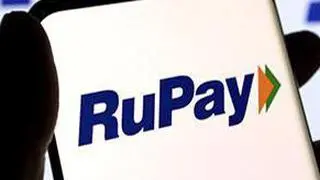With stressed debt of over Rs 50,000 crore under the independent credit evaluation (ICE) framework, banks have to take a haircut in the range of 40-60 per cent to achieve a rating of RP4 (moderate degree of safety regarding timely servicing of financial obligations), according to an industry study.
“The average sustainable debt for these assets is around 50 per cent,” said the study titled, ‘Code of hope,’ jointly conducted by The Associated Chambers of Commerce and Industry of India along with credit rating agency Crisil.
Under the Reserve Bank of India's revised framework for resolution of stressed assets, resolution plans (RPs) involving restructuring/ change in ownership in respect of ‘large’ accounts (that is accounts where the aggregate exposure of lenders is Rs 100 crore and above) require independent credit evaluation (ICE) of the residual debt by credit rating agencies (CRAs) specifically authorised by the central bank for this purpose.
While accounts with aggregate exposure of Rs 500 crore and above require two such ICEs, others will require one ICE. Only such RPs which receive a credit opinion of RP4 (debt facilities/ instruments with this symbol are considered to have a moderate degree of safety regarding timely servicing of financial obligations. Such debt facilities/instruments carry moderate credit risk) or better for the residual debt from one or two CRAs, as the case may be, will be considered for implementation.
Terming the Insolvency and Bankruptcy Code, 2016 (IBC) as a game changing reform for India’s economy, the study noted that effective implementation of IBC will help in preserving the value of assets and faster resolution, which also means that asset reconstruction companies (ARCs) would be able to churn capital faster and enhance returns.
The National Company Law Tribunal (NCLT) had approved a resolution plan for 32 stressed assets under the Corporate Insolvency Resolution Process (CIRP) as on June 30, 2018, with resolution to the tune of Rs 50,000 crore, against total claims of Rs 89,400 crore admitted by financial and operational creditors.
Noting that the average resolution timeline for these 32 accounts was 260 days vis-à-vis the stipulated 270 days, the study said, “That’s a huge improvement on the recovery time of 3.5-4 years taken by asset reconstruction companies, and 4.3 years according to the World Bank’s ‘Doing Business 2018’ report.”
Referring to the improvement in the recovery rate and reduction in timeline for resolution, which would increase investor confidence in the Indian corporate bond market, the study observed that with greater certainty of outcome and faster resolution under IBC, the interest of both domestic and foreign investors in lower-rated paper is expected to increase over time.
Besides, India’s ease of doing business ranking can further improve and for stakeholders, there is clarity on getting their share of dues.
The study also noted that IBC is expected to promote a market for unsecured financing because the distribution waterfall of recoveries following liquidation gives unsecured financial creditors (apart from all secured creditors) precedence over government dues.
Amid other benefits, the paper said IBC will help promote entrepreneurship and increase the role of professionals from various fields including law, accountancy and finance as an insolvent firm could be wound up on a fast-track basis within 90 days, thereby, protecting creditor interest and reallocating the capital to efficient businesses.
Even employees and workmen will benefit as they, too, can initiate insolvency proceedings for unpaid dues and have greater lien in distribution of liquidation proceeds.
The report, however, noted that challenges persist at multiple levels in terms of effective implementation of IBC - infrastructure issues, adherence to resolution timelines, liquidation impact, criticality of the role of the Committee of Creditors (CoC), and limited development of the secondary market.
“These would need to be addressed systematically and soon for successful implementation of the IBC over the medium-term and achieve the intended outcomes,” it added.








Comments
Comments have to be in English, and in full sentences. They cannot be abusive or personal. Please abide by our community guidelines for posting your comments.
We have migrated to a new commenting platform. If you are already a registered user of TheHindu Businessline and logged in, you may continue to engage with our articles. If you do not have an account please register and login to post comments. Users can access their older comments by logging into their accounts on Vuukle.